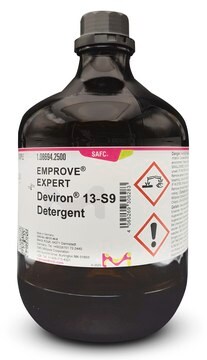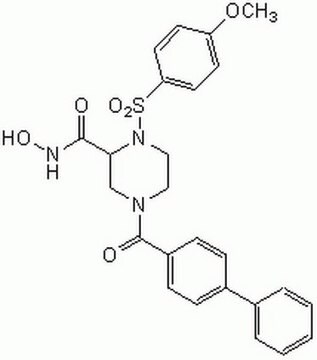ABS2129
Anti-IP3R 1
from rabbit
Synonym(e):
Inositol 1, 4, 5-trisphosphate receptor type I, IP3 receptor isoform 1, IP-3-R1, InsP3R1, Type 1 inositol 1, 4, 5-trisphosphate receptor, Type 1 InsP3 receptor
About This Item
Empfohlene Produkte
Biologische Quelle
rabbit
Qualitätsniveau
Antikörperform
affinity isolated antibody
Antikörper-Produkttyp
primary antibodies
Klon
polyclonal
Speziesreaktivität
human, rat, bovine, mouse, chicken
Methode(n)
immunohistochemistry: suitable (paraffin)
immunoprecipitation (IP): suitable
western blot: suitable
Isotyp
IgG
NCBI-Hinterlegungsnummer
UniProt-Hinterlegungsnummer
Versandbedingung
ambient
Posttranslationale Modifikation Target
unmodified
Angaben zum Gen
human ... ITPR1(3708)
rat ... Itpr1(25262)
Allgemeine Beschreibung
Spezifität
Immunogen
Anwendung
Zelluläre Signaltransduktion
Western Blotting Analysis: A representative lot detected IP3R1 in bovine salivary gland, DT40 3KO cells stably expressing IP3R1 (Chandrasekhar, R., et. al. (2016). J Biol Chem. 291(10):4846-60).
Immunohistochemistry Analysis: A 1:1,000 dilution from a representative lot detected IP3R1 in human brain and rat brain tissues.
Immunoprecipitation Analysis: A representative lot detected IP3R1 in bovine salivary gland (Chandrasekhar, R., et. al. (2016). J Biol Chem. 291(10):4846-60).
Qualität
Western Blotting Analysis: A 1:1,000 dilution of this antibody detected IP3R1 in 10 µg of rat brain microsomal preparation.
Zielbeschreibung
Physikalische Form
Lagerung und Haltbarkeit
Sonstige Hinweise
Haftungsausschluss
Sie haben nicht das passende Produkt gefunden?
Probieren Sie unser Produkt-Auswahlhilfe. aus.
Lagerklassenschlüssel
12 - Non Combustible Liquids
WGK
WGK 2
Flammpunkt (°F)
Not applicable
Flammpunkt (°C)
Not applicable
Analysenzertifikate (COA)
Suchen Sie nach Analysenzertifikate (COA), indem Sie die Lot-/Chargennummer des Produkts eingeben. Lot- und Chargennummern sind auf dem Produktetikett hinter den Wörtern ‘Lot’ oder ‘Batch’ (Lot oder Charge) zu finden.
Besitzen Sie dieses Produkt bereits?
In der Dokumentenbibliothek finden Sie die Dokumentation zu den Produkten, die Sie kürzlich erworben haben.
Unser Team von Wissenschaftlern verfügt über Erfahrung in allen Forschungsbereichen einschließlich Life Science, Materialwissenschaften, chemischer Synthese, Chromatographie, Analytik und vielen mehr..
Setzen Sie sich mit dem technischen Dienst in Verbindung.





